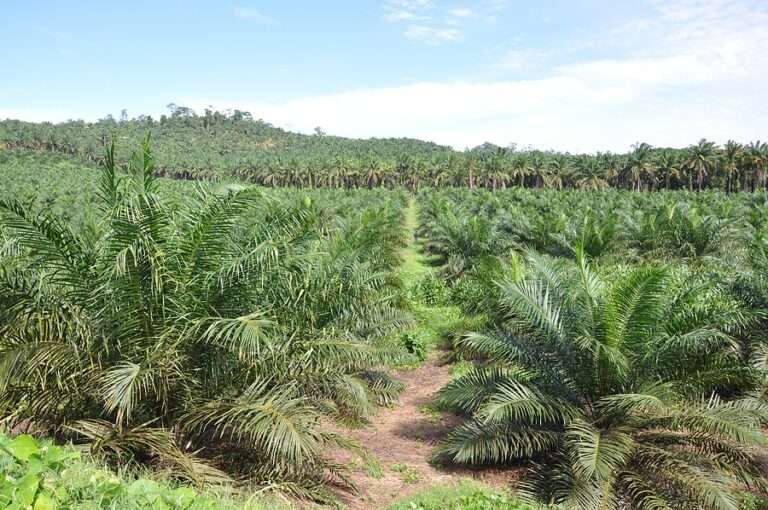Malaysia to monitor curbs on palm biofuel after WTO ruling
Malaysia to monitor curbs on palm biofuel after WTO ruling Biofuels International Magazine


Malaysia to Monitor EU Response to WTO Ruling on Palm Oil-based Biodiesel

Malaysia will monitor how the EU responds to a World Trade Organization (WTO) ruling that supported the bloc’s stance that palm oil-based biodiesel should not count as a renewable biofuel.
WTO Ruling and Malaysia’s Complaints
A WTO adjudicating panel, in its first ruling related to deforestation, rejected Malaysia’s claims against the EU decision, but accepted its complaints over how the measures had been prepared, published, and administered, Reuters reported.
The EU will need to make adjustments, but need not withdraw its measures, following the WTO ruling.
Malaysia’s Response and Monitoring
The Malaysian government will monitor any changes to the EU’s regulations to bring it into line with the WTO’s findings, and pursue compliance proceedings if necessary, Plantations and Commodities Minister Johari Abdul Ghani said.
Malaysia, the world’s second-largest producer of palm oil, has described the EU’s renewable energy directive as discriminatory, and in 2021 asked the WTO to examine the rules restricting the bloc’s use of palm oil-based biofuels.
Under the regulations, palm oil-based fuels can no longer be considered as renewable transport fuel and are to be phased out by 2030, as the EU has determined that palm oil cultivation resulted in excessive deforestation.
WTO Findings and Justification
Johari said the WTO report found fault with the EU’s rules on indirect land use change to ban palm oil biofuels, and with the bloc’s approach to notifying and consulting with other economies when introducing new trade measures.
“This ruling from the WTO demonstrates that Malaysia’s claims of discrimination are indeed justified,” he said.
SDGs, Targets, and Indicators Analysis
1. Which SDGs are addressed or connected to the issues highlighted in the article?
- SDG 7: Affordable and Clean Energy
- SDG 12: Responsible Consumption and Production
- SDG 13: Climate Action
- SDG 15: Life on Land
- SDG 17: Partnerships for the Goals
The issues highlighted in the article are connected to these SDGs because they involve renewable energy, sustainable production and consumption, climate change mitigation, protection of land and forests, and international partnerships.
2. What specific targets under those SDGs can be identified based on the article’s content?
- SDG 7.2: Increase substantially the share of renewable energy in the global energy mix.
- SDG 12.2: By 2030, achieve the sustainable management and efficient use of natural resources.
- SDG 13.2: Integrate climate change measures into national policies, strategies, and planning.
- SDG 15.2: Promote the implementation of sustainable management of all types of forests.
- SDG 17.14: Enhance policy coherence for sustainable development.
These targets are relevant to the issues discussed in the article as they address the need for renewable energy, sustainable resource management, climate change integration, forest conservation, and international policy coherence.
3. Are there any indicators mentioned or implied in the article that can be used to measure progress towards the identified targets?
Yes, there are indicators mentioned or implied in the article that can be used to measure progress towards the identified targets. These indicators include:
- Share of renewable energy in the global energy mix
- Efficient use of natural resources
- Integration of climate change measures into national policies
- Implementation of sustainable forest management
- Policy coherence for sustainable development
The article discusses the need for adjustments in the EU’s regulations and compliance with the WTO’s findings, which implies progress towards these indicators.
SDGs, Targets, and Indicators Table
| SDGs | Targets | Indicators |
|---|---|---|
| SDG 7: Affordable and Clean Energy | Increase substantially the share of renewable energy in the global energy mix. | Share of renewable energy in the global energy mix. |
| SDG 12: Responsible Consumption and Production | By 2030, achieve the sustainable management and efficient use of natural resources. | Efficient use of natural resources. |
| SDG 13: Climate Action | Integrate climate change measures into national policies, strategies, and planning. | Integration of climate change measures into national policies. |
| SDG 15: Life on Land | Promote the implementation of sustainable management of all types of forests. | Implementation of sustainable forest management. |
| SDG 17: Partnerships for the Goals | Enhance policy coherence for sustainable development. | Policy coherence for sustainable development. |
Behold! This splendid article springs forth from the wellspring of knowledge, shaped by a wondrous proprietary AI technology that delved into a vast ocean of data, illuminating the path towards the Sustainable Development Goals. Remember that all rights are reserved by SDG Investors LLC, empowering us to champion progress together.
Source: biofuels-news.com

Join us, as fellow seekers of change, on a transformative journey at https://sdgtalks.ai/welcome, where you can become a member and actively contribute to shaping a brighter future.







